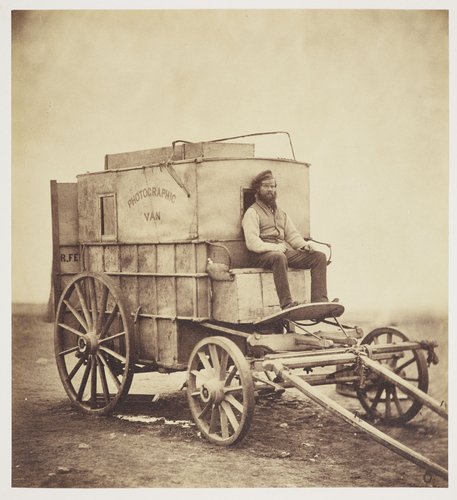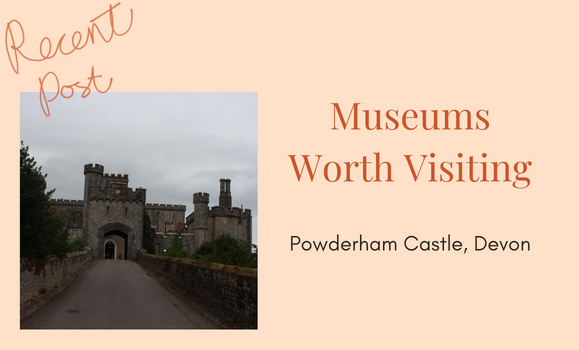Roger Fenton, Britain's First War Photographer
 |
| Photographic Van & Marcus Marcus Sparling // RCIN 2500439 Royal Collection Trust / © |
The Crimean War (1853-1856) was the first war to be documented by a photographer, capturing the reality of the Victorian war zone and allowing the public to witness the front line for the very first time.
The Crimean War saw Britain, France and the Ottoman Empire come head to head the Russian Empire in an attempt to curtail Russian expansion into Ottoman Territory and towards India, Britain's 'Jewel in the Crown'. British photographer, Roger Fenton travelled to the front line in a shabby horse-drawn van come darkroom to capture the first ever images of war but did they always depict the truth?
 |
| Roger Fenton Self Portrait February 1852 / Gilman Collection, Purchase, Harriette and Noel Levine Gift, 2005 |
Roger Fenton, Lancashire Lad & Professional Photographer
Fenton was born and raised in Rochdale, Lancashire and started his adult career as a painter before pursuing photography in 1851. The following year he travelled to Russia to photograph landmarks in Kiev and Moscow and founded the Photographic Society in 1853. By 1854, he had really made a name for himself as a photographer becoming the first official photographer of the British Museum. The Manchester based publishers, Thomas Agnew & Sons saw an opportunity to utilise Fenton's talents and commissioned him photograph the front line in Sevastopol in order to present real images of war to the public.
Fenton's photographs were printed on glass negatives and processed using the wet-collodion process. The negatives were then shipped back to Britain to make both salt paper and albumen prints to be presented to the public.
Arriving in Balaklava
In 1855, Fenton and his assistant, Marcus Sparling, boarded HMS Hecla along with 36 chests of camera equipment including 700 glass plates, 5 cameras and various other equipment. Fenton had obtained an old wine merchant's van which he converted into a travelling darkroom and his accommodation. However, when they arrived in the port of Balaklava, he was unable to disembark his van due to its size. Eventually he was able to unload his van from the ship and make his way to the front lines.
 |
| Fenton’s photograph of Lord Balgonie, 1855.Photograph: Royal Collection |
During his time in Crimea, Fenton captured over 350 images, including pictures of the port, camp life, portraits of soldiers and the aftermath of battle. It is believed that Fenton's images, which were exhibited to the British public back home, helped raise awareness of the conditions and experience of war. For example, he photographed Lord Balgonie which became the first photograph of someone with shell shock, demonstrating to the public the profound psychological effects of war. Previously the public had learned about battles and wars via heroic paintings and illustrations which, as we know, don't always portray the truth instead showing victory and heroism.
 |
| Camp Life via British Library| |
 |
| The Valley of the Shadow of Death via British Library |
However, Fenton has been accused of obscuring the truth with his images. Being supported by the government, Fenton didn't show the full picture. He didn't photograph casualties and deaths and refrained from showing the unsanitary conditions and suffering often reported by William Howard Russell, a war correspondent.
Matthew Lalumis suggests that Fenton misled the public by omitting things from his photos. One example being that he photographed soldiers wearing winter uniforms suggesting that the army was well equipped for the cold weather. However, Fenton didn't arrive until April when there would have been no need for such insulating clothing, suggesting his photographs were staged to give a certain impression. In fact, the British army were not well equipped during the winter before his arrival with 15,000 troops dying due to lack of supplies including warm clothing. Although Fenton was able to provide a more realistic insight into the nature of war, the harsh realities were often missed showing that even photography can be manipulated to portray a certain message.
Fenton's images may not have depicted the harsh realities of war but I think we can all agree that his work laid the foundations for a new and innovative method of documenting war and conflict, allowing the public at home to see war in a completely new light.
 |
| Major General Sir Robert Garrett, KCB, and Staff are served refreshments outside their tent. Major A.R.Garrett is seated left. Maj. Gen. Garrett is seated right. / © IWM Q 71091 |
Further Reading;
Royal Collection Trust, "Roger Fenton's Photographs of the Crimea" Royal Collection Trust. Accessed 8 May 2020, https://www.rct.uk/collection/themes/exhibitions/roger-fentons-photographs-of-the-crimea/the-queens-gallery-buckingham-palace/valley-of-the-shadow-of-death
"The Valley of the Shadow of Death, Roger Fenton" Time 100 Photos. Accessed 8 May 2020, http://100photos.time.com/photos/roger-fenton-valley-shadow-death
Malcolm Daniel, "Roger Fenton 1819-1869," Met Museum. Accessed 8 May 2020 https://www.metmuseum.org/toah/hd/rfen/hd_rfen.htm
Caroline Davies, "Pioneer photographer's stark images of Crimean War to go on display," The Guardian. Accessed 8 May 2020 https://www.theguardian.com/artanddesign/2017/aug/03/pioneer-photographer-crimean-war-roger-fenton
Jennifer Green-Lewis, Framing the Victorians: Photography and the Culture of Realism, New York: Cornell University Press 1996
Hirst Milhollen, "Roger Fenton, Photographer of the Crimean War," Quarterly Journal of Current Acquisitions 3 No. 4 (1946) 10-12




